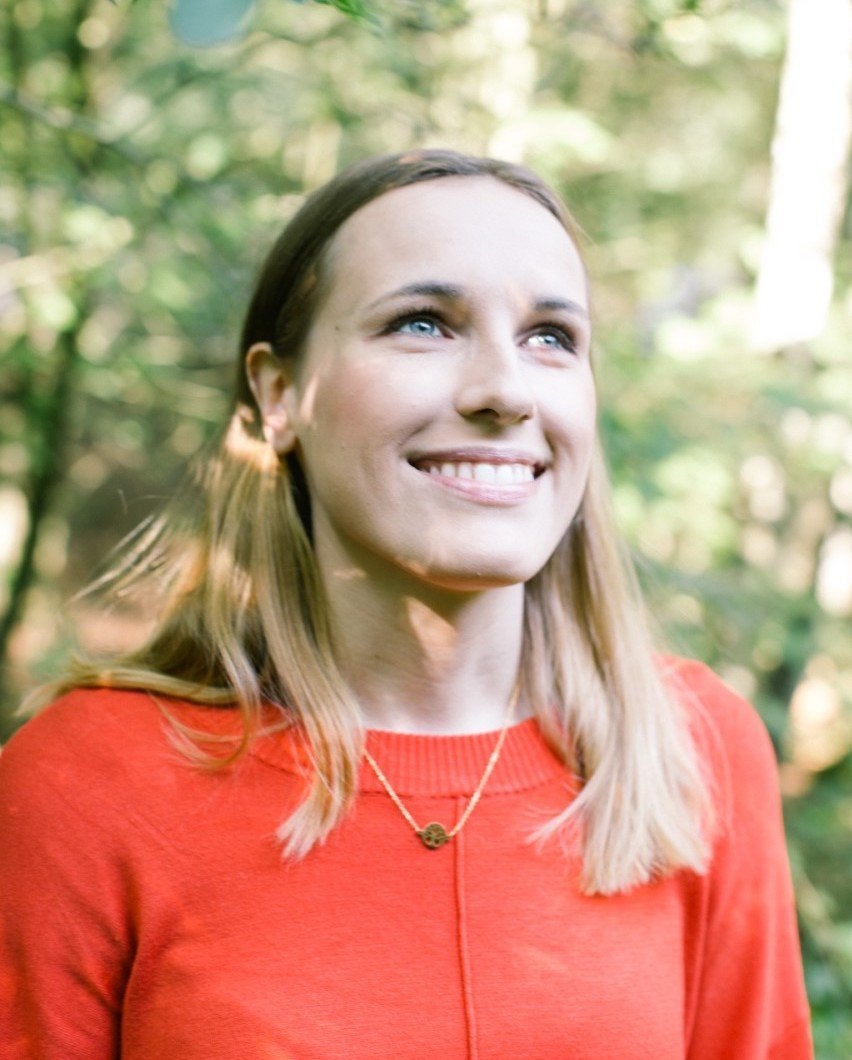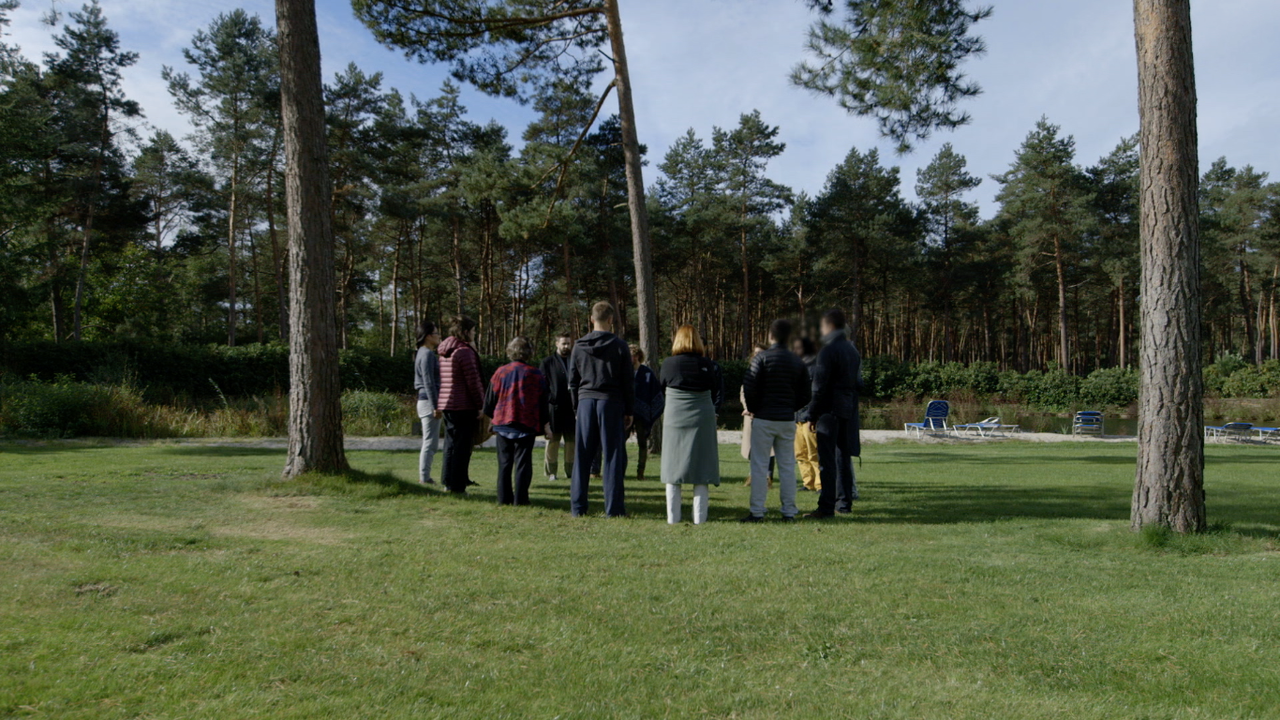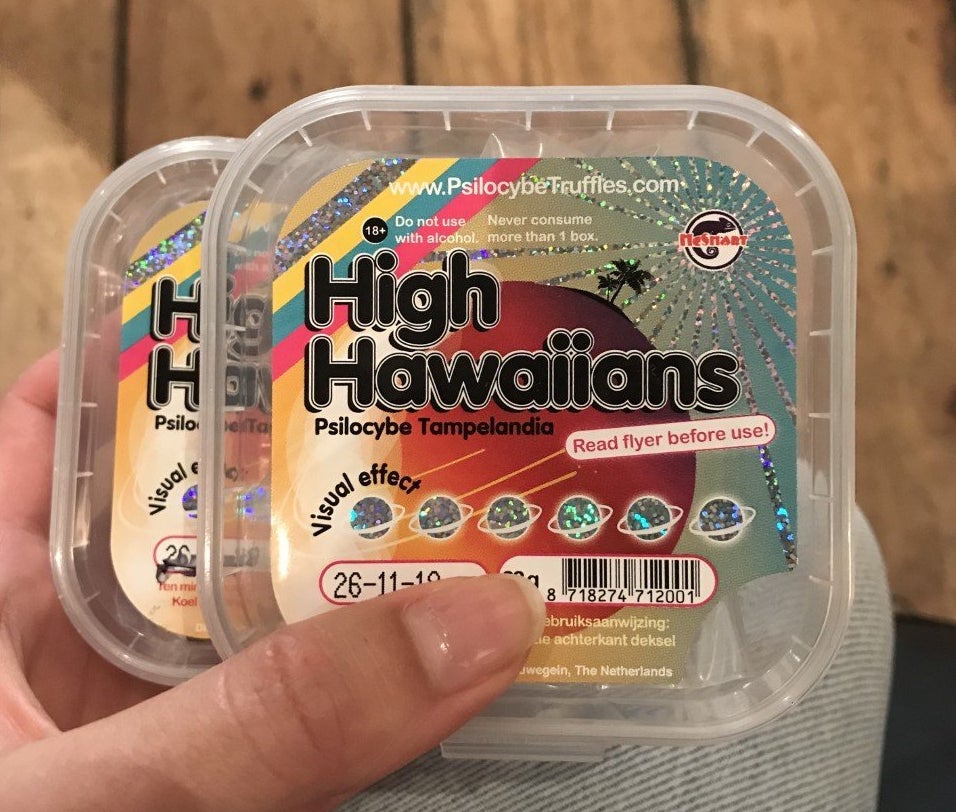After sipping a sour-smelling tea, we lie down on mattresses, wrap ourselves in blankets and don eye masks. It’s like some kind of bizarre adult sleepover ― except it’s midday on a Friday afternoon, and from what I’ve been told the next six hours could unfold into one of the most profound experiences of my life.
These days, it may not sound unusual for a 20-something to sign up for a four-day retreat with fifteen strangers in a foreign country to embark on a journey of “self-discovery.” In fact, it’s probably a very millennial thing to do. This particular one had all the expected components: meditation, dancing, singing around a fire, breathing workshops ... and a whole day dedicated to drinking a tea infused with magic mushrooms.
I’m kidding ― they weren’t magic mushrooms, they were “magic truffles,” an underground part of the mushroom that, curiously, has not been banned by Dutch law, which means that, along with cannabis, you can legally buy them in shops on the high street.
The retreats are run by the UK Psychedelic Society in the Netherlands and, as a filmmaker, I was participating for the purposes of research for a documentary about whether psychedelics can be an effective form of therapy.
Arriving in Amsterdam on a sunny afternoon, I met up with the group and was immediately taken aback by how many different accents I could hear. Compared to stories of plane journeys with multiple changeovers, my delayed four-hour Eurostar trip from London didn’t seem so bad. We each bought two packs of vacuum-packed brownish blobs called “High Hawaiians” before heading to the retreat venue in the luscious Dutch countryside.
Sandwiched between several days of preparation and integration, the actual psychedelic experience takes place on Day 2. On the first day, participants meet and take part in exercises that gently, but thoroughly, prepare us for the enormity of what we are about to experience. We talk about our “intentions” for the trip, which range from pure curiosity, improving creativity or being a better parent to grappling with heartbreak, loneliness or coming to terms with a traumatic childhood.
A morning movement workshop, individual check-ins, delicious vegan food and a sacred sage ceremony soon lull our anxiousness into a sense of security and safety. We are ready to take the “plant medicine.”

Fifteen minutes after gulping down the psychedelic tea, my eyes start streaming. I suddenly have no control over my tear ducts. Everyone else looks calm, but gradually emotions erupt and spread like dominoes on fire. People are laughing, crying, snorting, shaking. My heart beats rapidly, and my body temperature drops. I am a shivering, sobbing mess. Fortunately, the facilitators sense when you need reassurance, a hug, a blanket or food, and serenely float around the room helping us throughout our journeys.
A specially curated playlist reverberates loudly on speakers, encouraging us to experience a range of emotions. It feels like a rollercoaster of existential purging, and wasn’t long before I could not differentiate the music from myself ― however odd it sounds. We were the same. Later, I could see the music in front of me as a physical thing: a bright yellow synaesthetic web of intricate pulsating patterns. I was entranced with delight and awe.
But before that there were moments of deep reflection and sadness, including a piercing realization that my family’s and my own time on this earth is limited. I saw a cartoon cutout world of my childhood home from a bird’s-eye view. Time swallowed the house, papering it over with trees, ignorant to my happy memories or the significance of it being my own roots. It seemed nature was reminding me of its omnipresence and ability to exist with or without us.
Next was the experience of death ― or rather, being engulfed by the universe and no longer existing in bodily form ― while simultaneously feeling unified with everything. This experience of confronting one’s own mortality is common in situations like this, and is one of the reasons psychedelics have been used in trials to help end-of-life cancer patients come to terms with their terminal diagnosis.
I lost all grasp of time: a minute felt like hours, the days of the week were nonsensical words. I realized that, actually, I did not exist before this. I couldn’t fathom how I was going to make a documentary that portrayed this experience, or indeed, go back to work at all. What even was my life? What was “life” as a concept at all?
“Fifteen minutes after gulping down the psychedelic tea my eyes start streaming. Everyone else looks calm, but gradually emotions erupt and spread like dominoes on fire. People are laughing, crying, snorting, shaking. My heart beats rapidly, and my body temperature drops. I am a shivering, sobbing mess.”
I wondered how anyone had ever jumped off a bridge or balcony on this drug. Just sitting up took an inordinate amount of mental and physical strength. I sensed that my bladder was full and heaved my body to the bathroom with the help of a facilitator. I looked in the mirror and saw myself with gray hair ― as an old lady. Then a baby-faced reflection ― myself as a child. I giggled. What was my mind trying to tell me?
Back in the room, I sat down and closed my eyes. This time revealed a vast expansive vision of delicate glass flowers in a white room. Each flower represented a living person, each one so unique and fragile. It reminded me that everyone is intrinsically valuable, and that vision remains one of the most beautiful things I have ever witnessed.
Crucially, the days following the ceremony are dedicated to helping make sense of your trip and developing tools to positively integrate the experience into our daily lives. We hug, we walk in the woods, we write, we sing, we laugh, we cry and we share our deepest secrets. We have been to infinity and back together. Having been strangers just 36 hours ago, we are now firmly cemented into the fabric of each other’s lives.
These isolated visions will not change your life; action is required for change. But they might ignite something within you, and for people with a mental illness that could be a lifeline. For people like my brother, who has suffered with severe OCD and depression for the best part of a decade, it could be an exciting alternative treatment option. The Food and Drug Administration (FDA) in the United States has recently granted “breakthrough therapy” status to psilocybin (the psychoactive compound in magic mushrooms / truffles) which should accelerate research for treating conditions such as PTSD and depression. And with clinical trial results looking very promising so far, some U.K. scientists predict that psilocybin-assisted therapy could be a part of the National Health Service as early as 2021.

I remember telling myself during my trip that only those who really need to do this should do it. The first half of the experience was more intense, overwhelming and confusing than I could possibly put into words. That’s also the reason many believe it could be helpful for those suffering with certain mental illnesses; it gives you a radical new perspective and breaks your habitual patterns, even if just for a few hours. This could be transformative for someone locked in the negativity of their own mind. It is important to note, however, that psychosis-based conditions should not be combined with psychedelics, as they could do more harm than good.
Drugs are readily associated with addiction, and it’s easy to park psychedelics in that group too. But from personal experience, talking to neuroscientists and filming other peoples journeys, it doesn’t seem to be an experience that one rushes back to. In fact, rather ironically, scientists are now experimenting with psychedelics to treat addiction. What’s more, a euphoric “high” is not guaranteed, nor is it the high the kind typically associated with other drugs such as cocaine or heroin. Psychedelics are also generally inconveniently time-consuming affairs, with “journeys” brought on by substances such as Ayahuasca and LSD lasting up to 15 hours.
For me, the experience has helped me to appreciate what I have and develop a deeper gratitude for it. When I went on to film the retreat the following month for my documentary, there were varying experiences. One attendee described it as “one of the best things I’ve ever done,” while another admitted that her life had been “shattered and turned upside down” by the experience. She had expected to come out “totally healed” of her problems, but soon realized that isn’t quite how it works. The problem, or perhaps advantage, of psychedelics is that they are so wildly unpredictable. You simply don’t know what they will offer up ― or, indeed, how you will react to any insights that arise from the pits of your subconscious.
Retreats like the one I experienced are popping up all over the world, and appealing to societies that are increasingly feeling disconnected, hopeless and fearful of each other. Coupled with health services that struggle to penetrate mental illness with any meaningful force, it’s no wonder that people are deciding to take their mental health into their own hands.
“For me, the experience can be described as like looking down the barrel of your whole life ― but not in a linear, photo album kind of way, but more like a scattered scrapbook of your fears, hopes and hard truths.”
Fittingly, for an experience that seems to connect random people so immediately and deeply, the breadth of human experience is truly witnessed at retreats like this. A broad spectrum of ages, religions, colors, cultures, genders and professions undertake the same journey under the same cozy roof. It almost makes me wonder if every war and conflict in the world could be nullified by gathering leaders into a room and connecting them through a psychedelic experience in this same way. But then I remind myself that this overly idealistic way of thinking is perhaps one of the reasons psychedelics were banned in the 60s ...
For me, the experience can be described as like looking down the barrel of your whole life ― but not in a linear, photo album kind of way, but more like a scattered scrapbook of your fears, hopes and hard truths. For some people that will be appealing and feel necessary for healing. For others, it will sound like a nightmare.
Psychedelics may not be the “magic pill” for mental illness or the “cure” for a sick society that many of us are desperately hoping for, but it is impossible to deny their power. And with great power comes great responsibility.
Rebecca’s documentary “The Mind Explorers: A Psychedelic Weekend” is available to watch here.
Do you have a compelling personal story you’d like to see published on HuffPost? Find out what we’re looking for here and send us a pitch!
